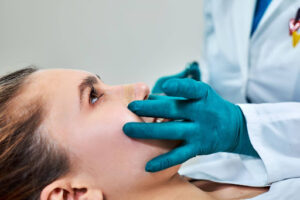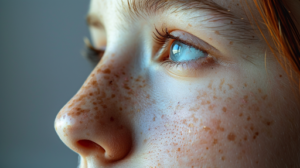Rhinoplasty, often referred to as a nose job, is a popular cosmetic surgery that aims to enhance the aesthetics and functionality of the nasal structures. While the procedure can have a significant impact on your facial appearance and overall confidence, patients often wonder about the practicalities of life post-surgery. One common concern is the use of glasses after rhinoplasty. In this article, we cover various aspects of the healing process, recovery timeline, and considerations for patients seeking eyeglass support.
Rhinoplasty and the Healing Process
Rhinoplasty is a surgical operation that aims to reshape and improve the nasal bridge, nasal bones, and other nasal structures. This complex surgery should be performed by a board-certified head and neck surgeon practicing in facial plastic surgery, ensuring that patients receive the highest level of care.
There are various different types of rose jobs, including:
- Ultrasonic rhinoplasty
- Ethnic rhinoplasty
- Middle Eastern rhinoplasty
- Alar base reduction
- Non-surgical nose job
- Male rhinoplasty
The Initial Healing Phase
Immediately after rhinoplasty, patients will have a nasal splint or a plastic splint placed in and on their nose to protect and stabilize the surgical site. The nasal splints play a crucial role in supporting the healing of nasal bones and nasal anatomy, which are often manipulated during the procedure. During this initial healing phase, typically the first week after surgery, the focus is on ensuring that the nasal structures are protected and can heal without pressure.
The Critical Healing Period
The critical healing period extends beyond the first week, as the nasal tissues, bones, and cartilage continue to recover and adjust. Residual swelling is common during this phase, and patients are advised to follow their surgeon’s instructions diligently to promote proper healing. The degree of swelling and discomfort varies among individual patients and the complexity of the surgery.
Learn more about the rhinoplasty procedure
When Can You Wear Glasses After Rhinoplasty?
The ability to wear glasses after rhinoplasty depends on several factors, including the type of eyewear and the patient’s healing progress. The weight of glasses and the fit are essential considerations in this context.
Traditional Glasses
Traditional eyeglasses are relatively heavy and can exert direct pressure on the nasal bridge. Consequently, patients are usually advised not to wear them during the initial recovery period, which typically lasts for the first 4-6 weeks. Heavy glasses can potentially damage nasal structures and disrupt the healing process, causing discomfort and affecting the cosmetic outcome of the surgery.
Bridgeless Glasses
For individuals who rely on eyeglasses for daily activities and cannot avoid wearing them, bridgeless glasses are a potential solution. Bridgeless glasses lack the nose bridge support, and instead, feature eyeglass supports that extend from the lenses to the sides of the face.
Lightweight Glasses
Lightweight glasses are an option for patients concerned about eyeglass usage post-rhinoplasty. These glasses put less strain on the nasal structures and can be more comfortable during the healing process. However, even with lighter glasses, it’s essential to consult with your surgeon to determine the right timing for their use.
Contact Lenses
Contact lenses are a practical alternative for patients who wish to avoid the use of eyeglasses during the initial healing phase.
How long is recovery from rhinoplasty?
Tips to Improve the Recovery Process
Recovering from rhinoplasty can be a gradual process, but there are steps you can take to help speed up your recovery and ensure one of the best possible outcome:
- Follow Your Surgeon’s Instructions: The most critical aspect of a quick recovery is to follow your surgeon’s post-operative instructions diligently. These instructions are tailored to your specific procedure and designed to promote optimal healing.
- Rest and Relaxation: Give your body the time it needs to heal by getting plenty of rest. Avoid strenuous activities and exercise during the initial healing phase.
- Elevate Your Head: Keeping your head elevated, even while sleeping, helps reduce swelling and promote proper drainage of fluids. You can use extra pillows to prop up your head.
- Use Cold Compresses: Applying cold compresses to the eyes and cheeks can help reduce swelling. Make sure to follow your surgeon’s recommendations for cold compress use.
- Stay Hydrated: Proper hydration supports the healing process. Drink plenty of water to stay hydrated.
Book a Rhinoplasty Consultation
At Clinique Face MD, Dr. Moubayed offers a comprehensive range of rhinoplasty services to address the unique needs of patients. We specialize in both cosmetic and functional nasal surgeries, tailoring our expertise to enhance the aesthetic beauty of the nose while also improving its functionality.
As a double board-certified head and neck surgeon practicing in facial plastic surgery, Dr. Moubayed, has a wealth of experience in various types of rhinoplasty procedures, including ethnic rhinoplasty and revision rhinoplasty. Whether it’s reshaping the nasal bridge, refining the nasal tip, or addressing breathing issues, we are committed to providing individualized care and delivering exceptional results.





